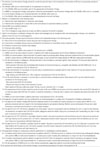Introduction
Previous Recommendations for Antithrombotic Therapies in Korea
Recently Updated Overseas Recommendation and Evidences
Stroke and bleeding risk assessment with antithrombotic therapy in nonvalvular atrial fibrillation patients
Pivotal clinical trials using novel oral anticoagulants
Dabigatran versus Warfarin: The Randomized Evaluation of Long-Term Anticoagulation Therapy (RE-LY)4)
Rivaroxaban versus Warfarin: Rivaroxaban Once Daily Oral Direct Factor Xa Inhibition Compared with Vitamin K Antagonism for the Prevention of Stroke and Embolism Trial in Atrial Fibrillation (ROCKET AF)5)
Apixaban versus Aspirin: Apixaban versus Acetylsalicylic Acid to Prevent Stroke in Atrial Fibrillation Patients Who Have Failed or Are Unsuitable for Vitamin K Antagonist Treatment (AVERROES)6)
Apixaban versus Warfarin: Apixaban for Reduction in Stroke and Other Thromboembolic Events in Atrial Fibrillation (ARISTOTLE)7)
Edoxaban versus Warfarin: The Effective Anticoagulation with Factor Xa Next Generation in Atrial Fibrillation-Thrombolysis in Myocardial Infarction 48 (ENGAGE AF-TIMI 48)8)
Antiplatelet therapy in atrial fibrillation patients unsuitable for oral vitamin K antagonist therapy
Effect of Clopidogrel Added to Aspirin in Patients with Atrial Fibrillation: The Atrial Fibrillation Clopidogrel Trial with Irbesartan for Prevention of Vascular Events (ACTIVE A)18)
Clopidogrel Plus Aspirin versus Oral Anticoagulation for Atrial Fibrillation in the Atrial Fibrillation Clopidogrel Trial with Irbesartan for Prevention of Vascular Events (ACTIVE W): a randomized controlled trial19)
The Recommendation of Korean Heart Rhythm Society for Patients with Nonvalvular Atrial Fibrillation (Table 3)
The CHA2DS2-VASc score should be used for appropriate antithrombotic therapy.
NOACs or anticoagulant therapy using warfarin should be recommended for antithrombotic therapy when the CHA2DS2-VASc score is 1 or greater.
Antithrombotic therapy is not recommended when the CHA2DS2-VASc score is 0.
The CHA2DS2-VASc score is considered as 0 when being female is the only risk factor.
NOACs may not be used in place of warfarin in patients with stable anticoagulation control without bleeding complications.
NOACs are recommended instead of warfarin for patients requiring anticoagulation therapy who have hypersensitivity or contraindication against warfarin, cannot maintain an INR within the optimal range, or have cerebral hemorrhage despite adequate INR maintainance.
-
For the administration of dabigatran, 150 mg twice daily is recommended as a standard regimen. Dose reduction (110 mg twice daily) should be considered in the following cases:
- Elderly patients (≥80 years old), concomitant administration of interacting drugs (e.g., verapamil), high bleeding risk (HAS-BLED score ≥3), or moderate renal dysfunction (CrCl 30-49 mL/min). -
For the administration of rivaroxaban, 20 mg once daily is recommended as a standard regimen. Dose reduction (15 mg once daily) should be considered in the following cases:
- High bleeding risk (HAS-BLED score ≥3) or moderate renal dysfunction (CrCl 30-49 mL/min). -
For the administration of apixaban, 5 mg twice daily is recommended as a standard regimen. Dose reduction (2.5 mg twice daily) should be considered for the following cases:
- Renal dysfunction (CrCl 30-49 mL/min)- Patients who have 2 or more of the following 3 factors: Elderly patients (≥80 years old), body weight ≤60 kg, or serum creatinine level ≥1.5 mg/dL. Assessment of renal function should be carried out prior to the use of NOACs and annually monitored in patients with normal (CrCl ≥80 mL/min) or mild renal dysfunction (CrCl 50-79 mL/min). It should be monitored 2-3 times per year in patients with moderate renal dysfunction (CrCl 30-49 mL/min).
NOACs are not recommended for patients with severe renal dysfunction (CrCl <30 mL/min).
For patients on warfarin therapy, INR should be measured within 24 hours before an invasive procedure or a surgery, and an INR of ≤1.5 is generally considered safe with regard to the risk of periprocedural or perioperative bleeding. Warfarin can be reintroduced 24 hours later when hemostasis is confirmed and the patient is under a stable condition.
For patients with CrCl ≥50 mL/min, dabigatran should be ceased 1 day prior to procedures with low bleeding risk, and 2-3 days for high bleeding risk procedures. For patients with CrCl 30-49 mL/min, dabigatran should be ceased 2 days prior to procedures with low bleeding risk, and 3-4 days for high bleeding risk procedures.
For patients with CrCl ≥30 mL/min, rivaroxaban should be ceased 1 day prior to procedures with low bleeding risk, and 2 days prior to procedures with high bleeding risk. For patients with <30 mL/min, ribaroxaban should be ceased 2 days prior to procedures with low bleeding risk, and more than 2 days prior to procedures with high bleeding risk.
For patients with CrCl ≥30 mL/min, apixaban should be ceased 1 day prior to procedures with low bleeding risk, and 2 days prior to procedures with high bleeding risk. For patients with <30 mL/min, apixaban should be ceased 2 days prior to procedures with low bleeding risk, and more than 2 days prior to procedures with high bleeding risk.
To conduct elective direct current cardioversion for patients with AF of ≥48 hours duration or unknown time of occurrence, anticoagulant therapy with warfarin (INR 2.0-3.0) is recommended for ≥3 weeks prior to and ≥4 weeks after cardioversion to reduce the risk of thromboembolism.
To conduct radiofrequency catheter ablation for patients with AF of ≥48 hours duration or unknown time of occurrence, anticoagulant therapy with warfarin (INR 2.0-3.0) is recommended for ≥3 weeks prior to and 2 months after cardioversion to reduce the risk of thromboembolism.
For the application of NOACs prior to or after elective cardioversion, supporting evidence is insufficient and limited.




 PDF
PDF ePub
ePub Citation
Citation Print
Print






 XML Download
XML Download